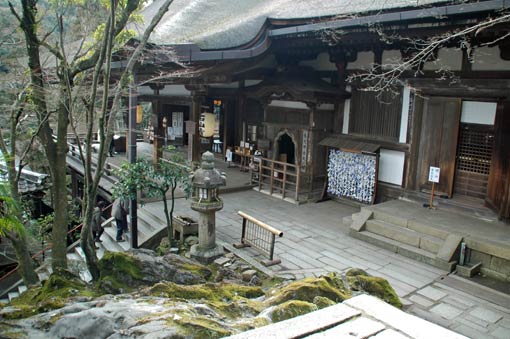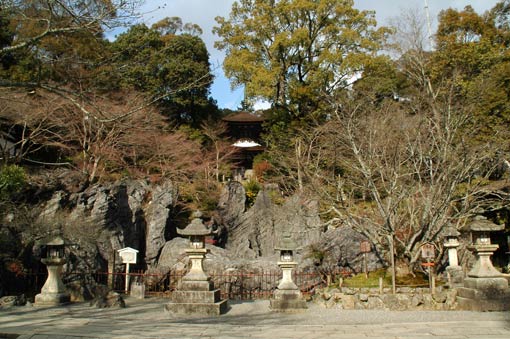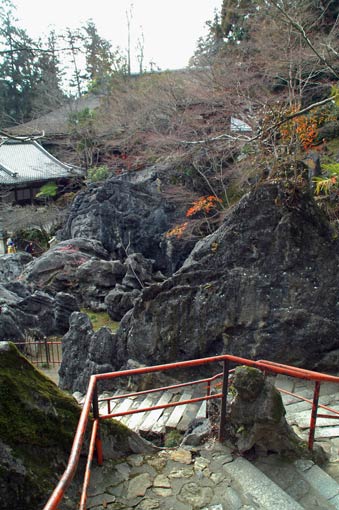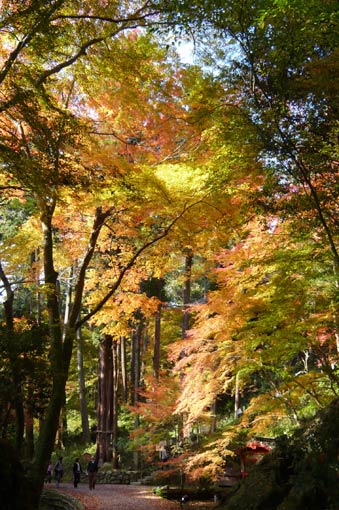Located on the side of a mountain facing Seta River, the ancient temple complex of Ishiyama-dera has been overlooking the southern edge of Lake Biwa and water slowly flowing from there for over 1,200 years.
As the name Ishiyama — literally a stony mountain — represents, one major feature of the temple is its rocky mountain setting. A large part of the premises spreads over a blackish wollastonite stone hill, and various shapes of rocks protrude everywhere. The main hall (a National Treasure) which has a vast wooden veranda was built on megalith. At the heart of the precincts, there is a huge craggy slab of black stone, which create the temple’s iconic landscape with Tahoto Pagoda (also a National Treasure) erecting behind it.
The other feature is its long history of lady visitors. Probably the most well-known is the Lady Murasaki, who is said to have got the idea for The Tale of Genji, (debatably) the oldest long novel in the world, during her stay here at the 11th century. The main hall now has the Room of Genji, with a life-size figure of the Lady Murasaki inside. Many of the other important classic female writers including the Mother of Fujiwara no Michitsuna, Seisho-Nagon also visited the temple and referred to it in their works. Even today, a lot of women pay a visit here to pray for safe childbirth, happy marriage and protection from evil. Because of all of this, the temple is filled with a very feminine aura indeed, despite its rough and masculine rocky setting.
Walking around the vast precincts is full of natural beauty. Along the route, you will see a beautiful garden with mossy stones, Japanese plum grove, pond with iris, little cave where you can crawl in, woods of maple, woods of cedar. As a temple with both cultural and natural treasures, Ishiyama-dera entertains visitors throughout the year, especially in spring with cherry blossoms in full broom and in autumn with colorful trees.




